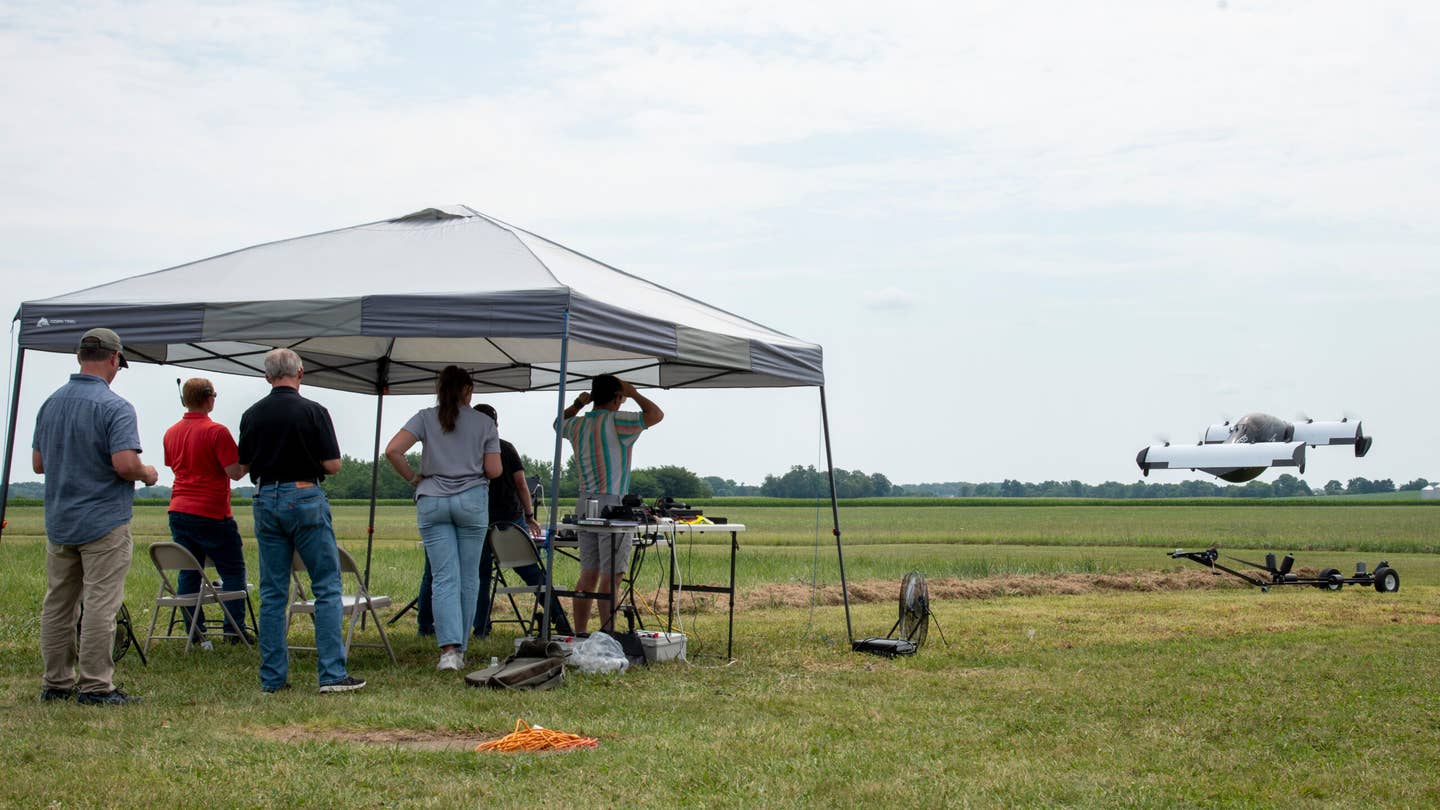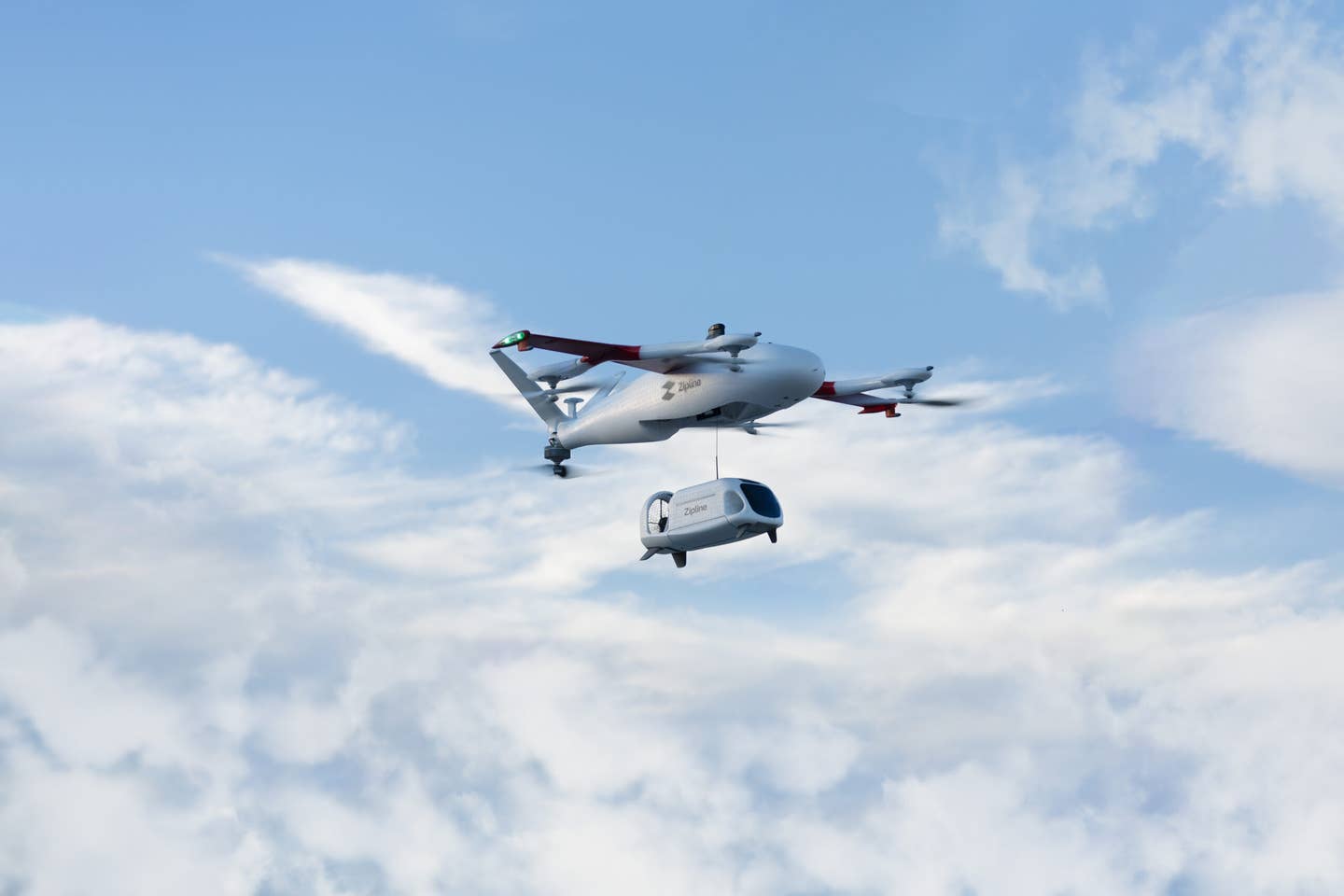Personal Aircraft Requiring No Certificate to Fly Gains Customers Nationwide
Pivotal’s BlackFly prototype, the predecessor of its Helix production model, has been delivered to 13 customers across the U.S.

The U.S. Air Force is among the early adopters of Pivotal’s BlackFly, which it is evaluating for various defense missions. [Courtesy: Matthew Clouse/U.S. Air Force]
BENTONVILLE, Arkansas—A personal electric vertical takeoff and landing (eVTOL) aircraft that requires no pilot certification to fly is taking to the skies of California, Delaware, Kentucky, Massachusetts, Ohio, Oregon, Texas, Washington, and other U.S. states.
Here at UP.Summit 2024—a private gathering of some 300 movers and shakers in the transportation industry—manufacturer Pivotal on Tuesday said it has delivered 13 of its BlackFly prototype aircraft to customers nationwide. Those users, which include both private owners and the U.S. Air Force, are some of the first in the world to pilot an eVTOL design.
Pivotal considers its first customer, Tim Lum, who received his BlackFly in 2023, to be the first private eVTOL pilot in the world, and the firm has made a point of getting its aircraft in the hands of users early. Through its early access program (EAP), it selected 12 U.S. participants willing to put in the hours required to train to fly it and provide feedback.
Both BlackFly and Helix—its successor and Pivotal’s first production aircraft, unveiled at last year’s UP.Summit—qualify as FAA Part 103 ultralight aircraft because they seat a single pilot and weigh less than 350 pounds when empty. That means no pilot certificate is required to fly it. In lieu of hundreds of flight hours, Pivotal says it can train customers on a simulator at its Palo Alto, California, headquarters in as little as two weeks. That training is included in a $190,000 purchase of Helix, which hit the U.S. market in January.
BlackFly may be a prototype of Helix, but it packs plenty of functionality. The model is a fixed-wing eVTOL design with a twist—while many eVTOLs feature tilting rotors, propellers, or even wings, BlackFly’s entire airframe tilts when transitioning from vertical or hover to forward flight. According to Pivotal, this reduces aircraft weight and complexity.
For hover, BlackFly relies entirely on propulsion from eight motors, four on each wing, but it cruises on fixed wings. The model is controlled by a single pilot using a pair of simple joysticks plus fly-by-wire controls, and all it takes is the push of a button and pull of a joystick to switch flight modes. With no landing gear, it can take off from pavement, dirt, or grass.
The idea of nonpilots taking to the skies freely may sound scary, but as an ultralight category aircraft BlackFly comes with some restrictions. Users can fly it only during daytime within Class G airspace, far from congested skies, and are limited to a range of about 20 sm (17 nm) and cruise speed of 63 mph (55 knots). Safety features include a full-aircraft parachute.
BlackFly’s unique capabilities have garnered attention from the U.S. Air Force, which is evaluating it for missions from surveillance to logistics to emergency response. Pivotal is a partner of Agility Prime, a division of Air Force innovation arm AFWERX dedicated to developing vertical lift technology.
The company’s agreement with AFWERX and Modern Technology Solutions Inc. (MTSI), for example, calls for the delivery of eight BlackFlys and two flight simulators, as well as pilot training and support services. In mid-June, Air Force personnel kicked off an eight-week uncrewed testing campaign to gauge the aircraft’s fit for military use. AFWERX and MTSI also evaluated Beta Technologies’ Alia, Pyka’s Pelican Cargo, and Pipistrel’s Velis Electro as part of the effort.
In May, Pivotal signed a two-year contract with the Air Force and Agility Prime, giving it further access to test facilities, expert resources, and sites under restricted airspace. Officials said they are intrigued by BlackFly’s ability to take off and land with minimal space, juice up using mobile electric power systems, and deploy within 30 minutes, all while being cheaper than a helicopter.
Only eight of Pivotal’s 13 BlackFly deliveries, though, have gone to the Air Force—the rest were shipped to private pilots, who according to the company are already flying. The number of personal eVTOL users could grow with the introduction of Helix, which maintains the same core features of its predecessor but introduces upgrades such as improved power, performance, and payload.
Like this story? We think you'll also like the Future of FLYING newsletter sent every Thursday afternoon. Sign up now.

Sign-up for newsletters & special offers!
Get the latest FLYING stories & special offers delivered directly to your inbox






